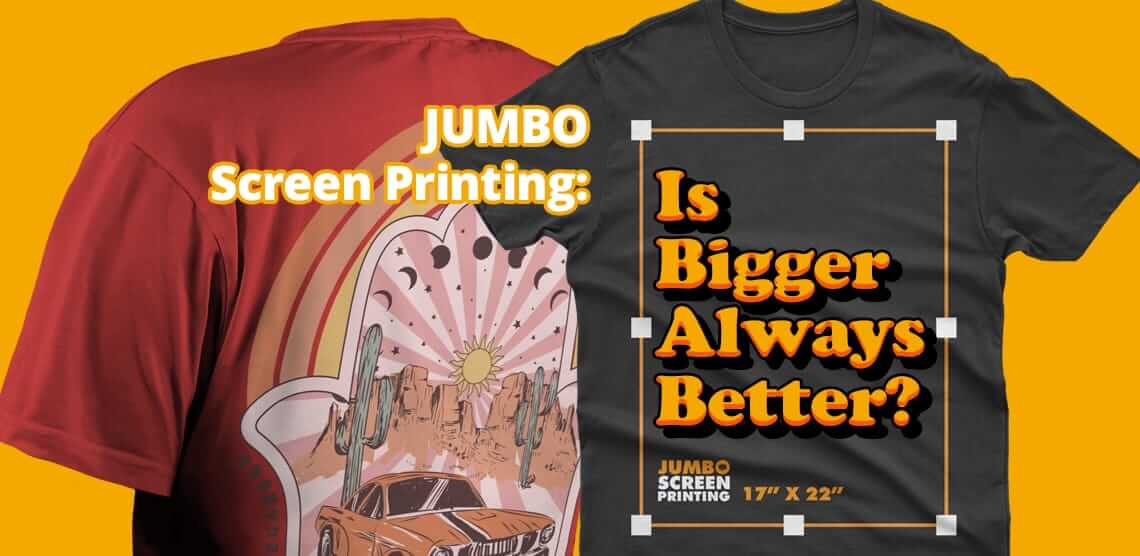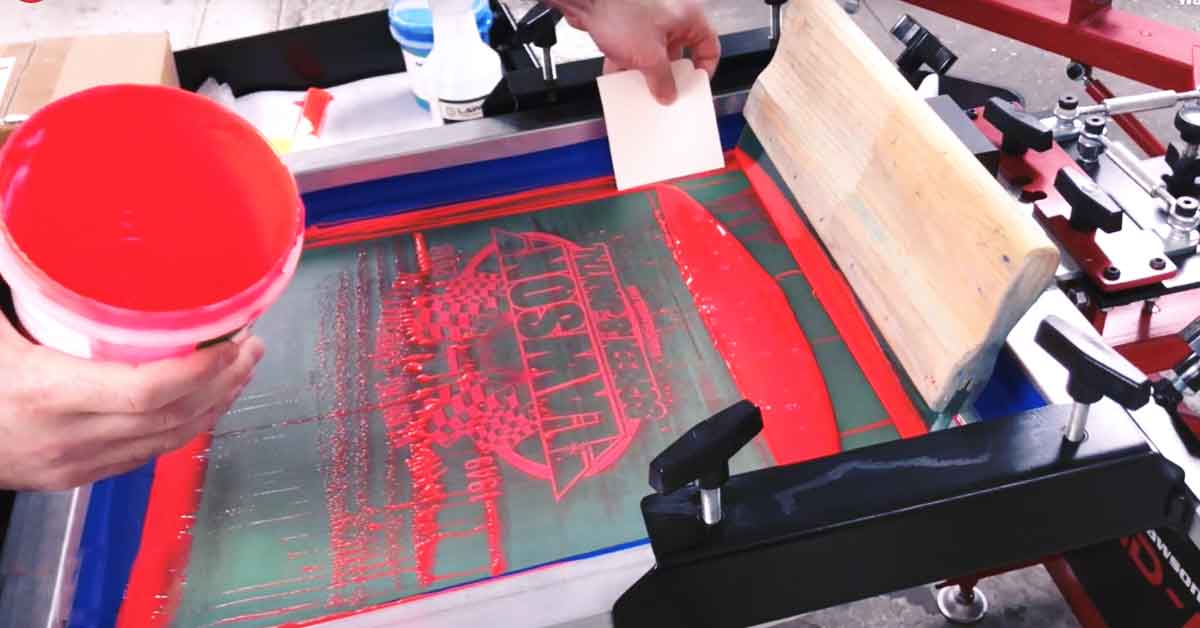Some Known Details About Tx Tees
Some Known Details About Tx Tees
Blog Article
The Only Guide to Tx Tees
Table of ContentsExamine This Report on Tx TeesIndicators on Tx Tees You Need To KnowThe Basic Principles Of Tx Tees The Greatest Guide To Tx TeesThe Basic Principles Of Tx Tees What Does Tx Tees Do?The Ultimate Guide To Tx Tees
Include up other prices, like the number of utilities it takes to run the store and the expense of ink and emulsion per layout. Take the print below.The solution should only be a couple of cents given that you 'd only need to coat one display for this work. Just how much should you bill per shirt to make an earnings? Generally, printers try to make up to 45% revenue on a print job. Right here's a table to assist you identify that: complete expense per item percent of wanted earnings as a decimal (instance:.25 or.45) earnings made per product per work Now let's talk regarding the productivity of DTF.

With DTF, you can print a handful of shirts, or simply one. Both screen printing and DTF have their niches in the globe.
The Greatest Guide To Tx Tees
The very best means to know? Ask around and see what print stores like your own are doing. screen printer. Attempt both out and see which you like far better
When you're choosing what sort of printing method to utilize for publishing your art work layouts on your garments, it is necessary that you know the distinctions in between these two techniques so you can make best use of results while reducing expenses. Screen printing is the most frequently utilized method for publishing styles on fabrics.
DTG printing is likewise referred to as place or straight to garment printing since it publishes only what is needed instead of making a screen as screen printers do. https://www.flickr.com/people/200329791@N05/. Display printing works by display filler squeegee screen printing ink display mesh screen, after that transferring the picture to garment using warmth and/or pressure
The DTG printer utilizes special dye-sublimation inks that are applied right into a pre-designed image by an electronic printing system. The inks enter into the fabric, enabling vibrant shades and remarkable information. It's likewise called spot or straight to garment printing due to the fact that it prints just what is required rather than making a display as display printers do.
What Does Tx Tees Mean?
It's much faster - you can print a fullcolor picture in mins, as opposed to hours for display printing. Second, there's no established up time or prices involved - you can print any design you like, without having to produce a screen first. Third, there's no waste - since screen printers screen print one style each time, they have to screen each color separately.
The paper is very expensive and can just be made use of as soon as. Once it's published on, it has actually to be thrown out. - The first acquisition cost is lower than the in advance investment of DTG printers- You can print multi-color layouts one screen each time as opposed to having to publish each shade individually like DTG printing.

Little Known Questions About Tx Tees.
Nonetheless, as opposed to making use of screen mesh as screen printers do, color sublimation printers use laser innovation to transfer your images onto garments or paper. A heat procedure moves the color from its solid-state directly into the gas phase which consequently merges it onto material substrates when they are rapidly heated up to heats under high stress.
Sublimation printing is eco-friendly. It Read More Here utilizes much less water than screenprinting, and due to the fact that it does not include using unsafe solvents, it's risk-free for all kinds of clothing. The dye sublimation inks are additionally odor free when cured, unlike display printers that utilize unsafe chemicals throughout the display printing process that leave behind an unpleasant odor.
They likewise save money on pricey tools like exposure units considering that dye sublimation printers don't need a UV direct exposure unit or a flash treatment stove that is usually used in screen printing (custom screen printing). What is direct to garment printing (DTG Printing)? DTG printing is an electronic screenprinting process that prints straight onto textile utilizing specialized inkjet printers
Tx Tees - Questions
DTG printing supplies lots of benefits over traditional screenprinting, consisting of the ability to print photographic quality photos, greater shade vibrancy, and the ability to publish designs on darker materials. DTG printers work by warming the textile ink until it becomes a gas. The gas after that permeates the material, bonding with the fibers to develop an irreversible print.

Screen printers merely prepare their display after that begin printing until they run out of item or ink.- There is a vast array of seasoned display printers around the world, which can be useful for beginners. - It's a slower procedure - display printers commonly have to wait for the ink to dry prior to they can print the next color- Display printers call for hands-on labor, so there's a greater understanding contour and it takes longer to create a premium style- Screen printing isn't as exact as DTG printing, so you may get some "blood loss" of shades from one part of the photo onto one more if not done effectively.
10 Simple Techniques For Tx Tees
Instead of making use of screen mesh as display printers do, color sublimation printers use laser modern technology to transfer your pictures onto garments or paper. A warmth process transfers the color from its solid-state straight into the gas stage which subsequently merges it onto textile substratums when they are rapidly heated up to heats under high pressure.
Sublimation printing is green. It uses less water than screenprinting, and due to the fact that it does not involve the use of unsafe solvents, it's safe for all kinds of clothing. The color sublimation inks are additionally odorless when treated, unlike screen printers that utilize unsafe chemicals during the screen printing process that leave an undesirable smell.
They also save money on expensive tools like direct exposure devices because dye sublimation printers don't need a UV direct exposure device or a flash treatment stove that is generally utilized in display printing. What is straight to garment printing (DTG Printing)? DTG printing is an electronic screenprinting procedure that publishes straight onto textile making use of specialized inkjet printers.
About Tx Tees
DTG printing uses lots of benefits over conventional screenprinting, including the capacity to publish photo high quality images, better shade vibrancy, and the capability to print designs on darker textiles. DTG printers function by heating the fabric ink till it develops into a gas. The gas after that permeates the fabric, bonding with the fibers to develop an irreversible print.
Report this page